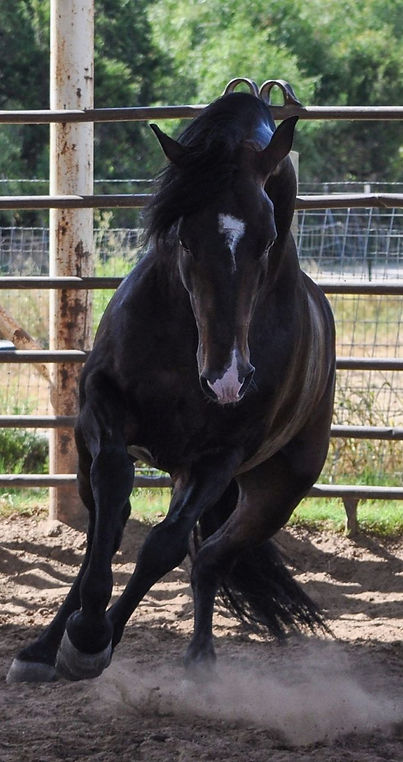
About the Breed | Video Library | Resources






What is an Andalusian?
The name Andalusian originated from the 8th century for the region in Spain, Andaluz, later called Andalucia, and is a hold over today for the Pure Blood Spanish Horse also known as Pura Raza Espanola or P.R.E.
-
Presenting your PRE for Revision - Article & Video

What is a Lusitano?
The Pure Blood Lusitano hails from Portugal also known as the P.S.L. which stands for Puro Sangue Lusitano. The term Lusitano originates from the original Latin name for the country, Lusitania.










Popular Cross Breeds
Cross breeds are very popular. The wonderful qualities of the Spanish and Portuguese horse enhances the breed they are crossed with. These include but are not limited to the Azteca (Andalusian X Quarter Horse), the Spanish Arabian (Andalusian X Arabian), the Warlander (Andalusian X Freisian), and the Spanish-Norman (Andalusian X Percheron). Andalusian bloodlines can also be found in today's Mustangs.

Versatility of the Iberians
These very athletic horses can do it all! The Iberian horses are highly versatile breed, making it a suitable mount for dressage, English pleasure, Western pleasure, eventing, working cattle, reining, jumping, trail riding, driving, working equitation, bullfighting, endurance, competitive trail and more.
Iberians are an ever popular choice for parades and exhibitions with their bravado and commanding appearance. They are often used as a bullfighting mount in Spain, Portugal and Mexico as well as traditional disciplines of Alta Escuela (high school) and Doma Vaquera. The Iberian is a horse for all seasons, all purpose breeds with exceptional trainability and easy going nature that makes them an ideal riding partner.







Where can I get one?
You don't have to travel all the way to Spain or Portugal to own one of these beautiful horses!
There are many distinguished breeders here in the States, both large scale and boutique offering top quality Iberian purebreds and crosses. Many are members of ERAHC.
VISIT THE MEMBERS PAGE TO FIND YOUR NEXT ANDALUSIAN OR LUSITANO Purebred or Cross!

Where can I see them?
Our club puts on several events a year. The most popular of these events is the annual Classic Breed Show held each August in Lexington, VA at the Virginia Horse Center. We are also having a show in New England in July. Not only will you have a chance to see these horses in action, you can learn about them by attending the educational seminars as well as speaking to many knowledgeable, friendly owners and breeders at this event.




BREED STANDARD

Read more about the breed characteristics here:
PRE (Spain) Breed Characteristics:
Lusitano (Portugal) Breed Characteristics:
VIDEO LINKS
Educational and Entertaining Videos

RESOURCES










































